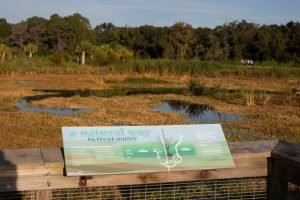 The United States Environmental Protection Agency (EPA) regularly reviews the registrations of already approved pesticides and will adjust those registrations if new needs or data come forth. In January of 2020 the EPA began this process for glyphosate, which is the most widely used herbicide in the US. As part of that process they have released a draft statement about the biological evaluation on endangered species for products containing glyphosate.
The United States Environmental Protection Agency (EPA) regularly reviews the registrations of already approved pesticides and will adjust those registrations if new needs or data come forth. In January of 2020 the EPA began this process for glyphosate, which is the most widely used herbicide in the US. As part of that process they have released a draft statement about the biological evaluation on endangered species for products containing glyphosate.
Public comments are a critical part of the EPA’s decision-making process for pesticide registration and help to shape the final rules, label language, use patterns, and ultimately status of registration. These comments can provide and will be combined with any additional data that is received to ultimately finalize a decision. The best available science is utilized, for instance enhanced modeling techniques that can estimate possible exposure in sensitive environments, like wetlands. This new data is evaluated and any possible impact on endangered species is discussed with U.S. Fish and Wildlife as well as the National Marine Fisheries Service.
The first step of the evaluation is a determination of if any endangered species could reasonably be expected to be exposed to the pesticide (glyphosate) at levels that would cause a noticeable effect. For those that do have an effect it is further defined as either not likely to adversely effect, or likely to adversely effect. EPA then publishes their current findings and seeks input from the public for any further clarifying data or commentary.
- No Effect- Does not impact habitat or species directly
- Not likely to adversely affect- There might be effects to habitat or species, but the effects are unlikely to be negative
- Likely to adversely affect- Even when used according to the label this product could negatively impact endangered species or critical habitat
For glyphosate the draft evaluation has determined that:
- 100% of listed species may be affected
- 93% are likely to be adversely affected
- 100% of critical habitats may be affected
- 96% are likely to be adversely affected
The comment period is open for 60 days from the initial press release, November 25, 2020.
Press release: https://www.epa.gov/pesticides/epa-releases-draft-biological-evaluation-glyphosate
Biological Evaluation: https://www.epa.gov/endangered-species/draft-national-level-listed-species-biological-evaluation-glyphosate#executive-summary
Public Comment: https://www.regulations.gov/searchResults?rpp=25&po=0&s=EPA-HQ-OPP-2020-0585&fp=true&ns=true
 0
0

